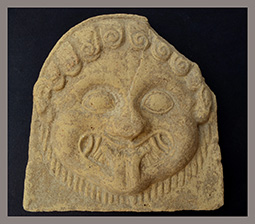Autore: L. Lepore
Scarica l’articolo in formato .pdf: Kaulonía: i complessi edilizi di S. Marco nord-est
 Le campagne di scavo, condotte dall’Università di Firenze dal 2003 al 2014 a Kaulonía, odierna Monasterace Marina, nel settore denominato S. Marco nord-est, hanno messo in luce una ininterrotta e complessa sequenza stratigrafica comprendente diverse strutture edilizie. Queste ultime sono riferibili ad almeno quattro abitazioni private (la “casa dell’aryballos”, la “casa dei telai”, la “casa di Clete”, la “casa del personaggio grottesco”) e ad un complesso edilizio pubblico. La “casa dell’aryballos” si inquadra tra la seconda metà del VII e la prima metà del VI sec. a.C. La “casa dei telai” e la “casa di Clete” risalgono alla seconda metà del VI-inizi del V sec. a.C. La “casa del personaggio grottesco” è in uso tra il secondo quarto del V e la fine del IV sec. a.C. Il complesso pubblico è costituito da una piazzola limitata su due lati da un grande edificio ad L, che tra gli inizi del III e il II-I sec. a.C. va a sovrapporsi all’area residenziale.
Le campagne di scavo, condotte dall’Università di Firenze dal 2003 al 2014 a Kaulonía, odierna Monasterace Marina, nel settore denominato S. Marco nord-est, hanno messo in luce una ininterrotta e complessa sequenza stratigrafica comprendente diverse strutture edilizie. Queste ultime sono riferibili ad almeno quattro abitazioni private (la “casa dell’aryballos”, la “casa dei telai”, la “casa di Clete”, la “casa del personaggio grottesco”) e ad un complesso edilizio pubblico. La “casa dell’aryballos” si inquadra tra la seconda metà del VII e la prima metà del VI sec. a.C. La “casa dei telai” e la “casa di Clete” risalgono alla seconda metà del VI-inizi del V sec. a.C. La “casa del personaggio grottesco” è in uso tra il secondo quarto del V e la fine del IV sec. a.C. Il complesso pubblico è costituito da una piazzola limitata su due lati da un grande edificio ad L, che tra gli inizi del III e il II-I sec. a.C. va a sovrapporsi all’area residenziale.
The excavation campaigns conducted from 2003 to 2014 by the University of Florence at Kaulonía, current Monasterace Marina, in the sector known as north-east S. Marco, brought to light an uninterrupted complex stratigraphic sequence, including various building structures. The latter belong to at least four private houses (the “house of the aryballos”, the “house of the looms”, the “house of Clete” the “house of the grotesque character”) and to a public complex. The “house of the aryballos” dates between the second half of the 7th and the first half of the 6th cent. BC. The “house of the looms” and the “house of Clete” date back to the second half of the 6th- beginning of the 5th cent. BC. The “house of the grotesque character” was in use between the second quarter of the 5th and the end of the 4th cent. BC. The public complex consists of a square limited on two sides by a large L-shaped building, which overlaps the residential area between the beginning of the 3rd and 2nd-1st cent. BC
